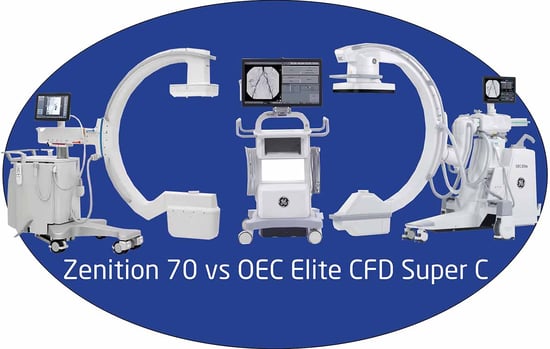Are you looking for a new C-Arm for your healthcare facility or veterinary clinic? C-Arms use fluoroscopy technology to produce high-resolution real-time X-ray images. These allow surgeons to closely monitor the progress of procedures and make decisions in real time.
These allow surgeons to closely monitor the progress of procedures and make decisions in real time.
Zenition 70 Mobile C-Arm With Flat Detector
If you’re looking for exceptional imaging clarity and flexibility for a wide variety of cases, the Zenition 70 Mobile C-Arm delivers proven ease of use and future-fit capabilities. It has an intuitive point and shoot design and on-screen guidance. It’s engineered for continuous imaging with SmartFilters’ enhanced heat management to support longer and complex procedures.
The standard Windows platform is ready to embrace new clinical applications and support and service technologies as they evolve. It has an 80-second boot up time for fast availability. You’ll be able to visualize complex structures and dense anatomy with exceptional clarity and dose control. You can also connect the Zenition mobile C-arm with other OR systems and hospital infrastructure thanks to advanced connectivity and interoperability tools including high speed wireless data transfer.
The GE OEC Elite CFD is a versatile, powerful mobile imaging system that will deliver high quality images at low doses. It has a CFD CMOS flat panel detector, Live Zoom, 4k display and enhanced noise reduction features. It has a touch screen user interface, motorized arm and wireless footswitch.
It can be used for a wide range of procedures, including gastrointestinal, orthopedics, vascular, endoscopic, urologic, critical care, neurologic, pain management and emergency procedures.
Do I Have To Worry About Radiation Exposure?
Both of these C-arms have built-in dose control mechanisms, which enable operators to regulate and minimize radiation exposure during procedures. It’s important to understand how to optimize control to ensure the safety of medical staff and patients.
What’s The Difference?
Both units are quite similar. However, there are a few significant differences.
• The weight of the GE C-arm is 635 lbs., whereas the Phillips is 740 lbs.
• The GE video monitor is a 27” LCD TFT Color Touchscreen display, while the Philips has two 19” high brightness LCD Color, with the left monitor being touchscreen.
• The GE PC image storer holds 50,000 images while the Philips holds 140,000 images.
Talk To An Expert
The easiest way to determine which C-arm would be best to fit your needs is to talk to one of the experts at Atlantis Worldwide. We’ve been helping medical imaging facilities, veterinary clinics and healthcare facilities with their medical imaging needs for almost 31 years and would love to help you.
Some blogs you may have missed:



